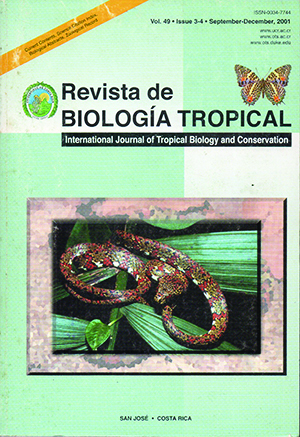Abstract
Asurvey of homopteran species (Auchenorryncha) was conducted in coffee plantations with no shade (C), and in those with shade of either poró (Erythrina poeppigiana) (CP) or poró plus laurel (Cordia alliodora) (CPL), in Turrialba, Costa Rica. A total of 130 species in ten families were collected, dominated by Cicadellidae (82 species). Species richness was highest in the CP system (88), followed by CPL (74) and C systems (60). Five most common species for all systems were Fusigonalia lativittata, Hebralebra nicaraguensis, Neocoelidia sp., Oliarus sp. and Clastoptera sp. Diversification of the coffee agroecosystem favors some species while limiting others, and have no effect on the majority of species. Thus, only F. lativittata, Neocoelidia sp. and Scaphytopius ca. latidens were well represented in all systems, but were more abundant in coffee shrubs. Additionally, the following were the dominant species in each system: Graphocephala sp. 1 (C), F. lativittata (CP) and H. nicaraguensis (CPL). Four species abundant on laurel trees, including H. nicaraguensis, appeared almost exclusively on these tree species. Species similarity was highest on the CP and CPL systems (51 % of the species in common), followed by the C and CP (39 %) and the C and CPL systems (38 %). These findings show that even disturbed systems can harbor many insect species, so that they deserve attention from conservation advocates and biologistsComments

This work is licensed under a Creative Commons Attribution 4.0 International License.
Copyright (c) 2001 Revista de Biología Tropical
Downloads
Download data is not yet available.


